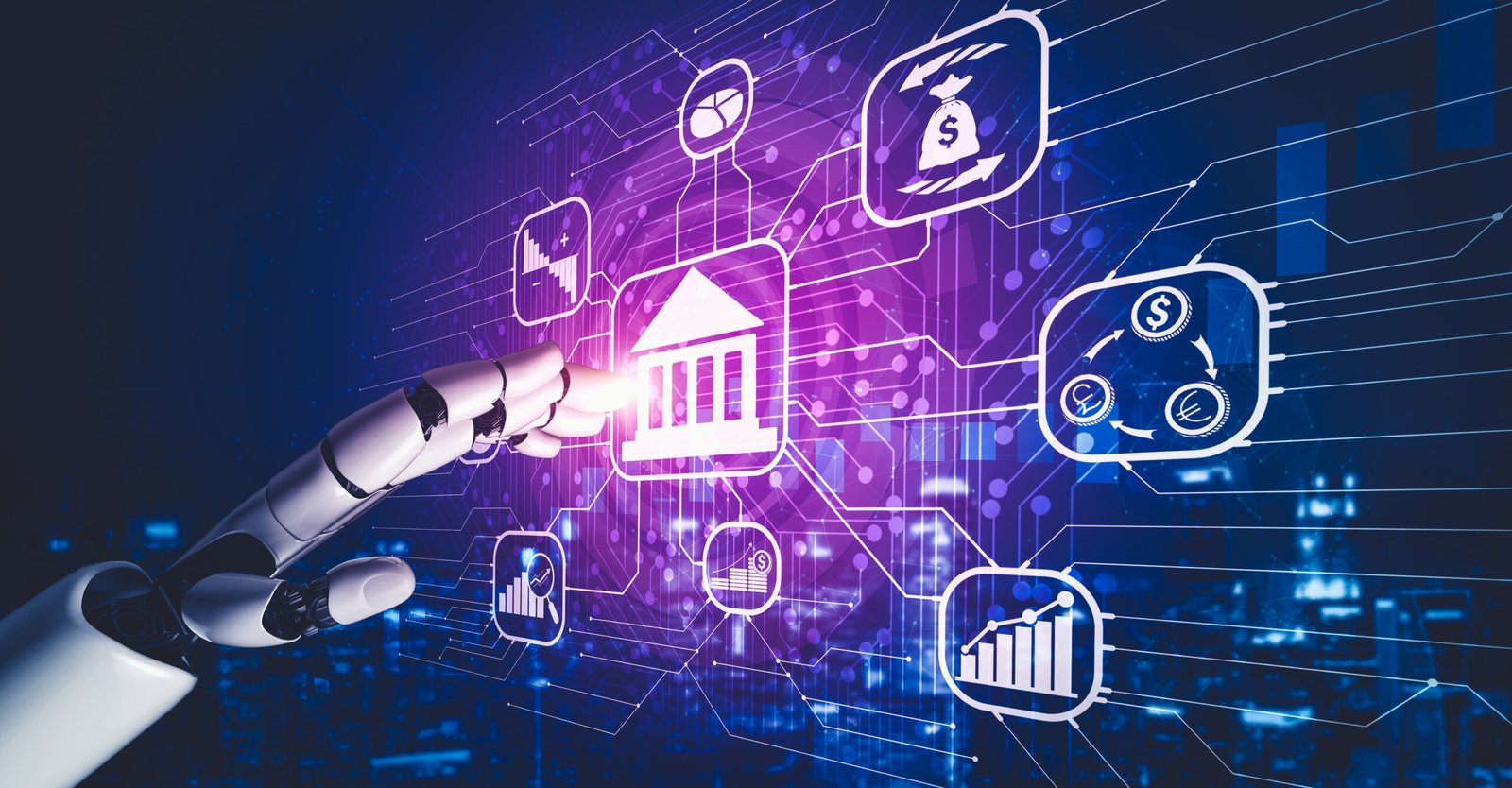India stands at a historic inflection point. As we enter the second half of the decade, the synergy between cutting-edge technology and robust economic reforms is giving rise to what many call a “Techno-Economic Revolution.” From artificial intelligence transforming how we work, to 5G powering real-time connectivity, and fintech redefining financial inclusion — the Indian economy is undergoing a massive shift. This blog dives deep into how AI, 5G, and fintech are playing a pivotal role in reshaping India’s GDP in 2025 and beyond.
-
AI-Powered India: The Intelligence Backbone of the Economy
🔸 AI in Governance and Public Services
Artificial Intelligence is no longer just a Silicon Valley buzzword; it’s now a vital instrument in India’s governance framework. In 2025, AI has been deeply integrated into public service delivery. Whether it’s predictive analytics in agriculture to prevent crop failure, or AI-driven surveillance for enhanced border security, the government is using intelligent systems to plug inefficiencies and forecast future needs. This has led to more targeted welfare schemes, better allocation of budgets, and increased transparency. As these systems reduce fraud and increase operational speed, India saves billions and drives up its economic productivity.
🔸 AI in Healthcare and Education
Healthcare diagnostics powered by AI are accessible even in remote villages. Startups are offering AI-based early disease detection at ultra-low cost, saving lives and reducing the burden on tertiary hospitals. In education, adaptive learning platforms using AI are tailoring curriculum based on student performance and needs, making India’s youth more future-ready than ever before. These AI integrations aren’t just boosting human development indices — they’re also empowering a healthier, smarter workforce that contributes directly to GDP growth.
🔸 AI in Businesses and Startups
Businesses across sectors have embedded AI into their DNA. From e-commerce personalization engines to intelligent manufacturing robots, AI is making companies leaner, faster, and more productive. Indian unicorns are no longer service-based alone; they’re increasingly product- and AI-driven. AI-driven automation also means companies can scale without proportionately increasing headcount, improving margins and returns on investment.
-
5G: The Digital Nervous System of India’s Economy
🔸 Industrial Transformation with 5G
5G is not just about faster internet on your smartphone. In 2025, India’s 5G rollout is revolutionizing industries. Smart factories powered by 5G and IoT (Internet of Things) allow real-time data transmission between machines, workers, and management systems. Downtime has reduced drastically. Sectors like manufacturing, mining, and logistics are witnessing an explosion in productivity due to this always-on connectivity.
🔸 5G and Urban Mobility
Urban infrastructure is going through a massive upgrade with 5G. Real-time traffic monitoring, connected vehicles, and AI-powered traffic management are easing congestion and reducing fuel consumption. This not only saves citizens time but also boosts overall economic efficiency by improving intra-city logistics and workforce mobility. Even public transport systems are becoming smarter, dynamically adjusting to passenger flows and traffic conditions.
🔸 5G in Rural India: Bridging the Digital Divide
While urban India basks in digital transformation, 5G is now a bridge to inclusion for rural Bharat. High-speed internet is no longer a privilege. Farmers access live weather forecasts, market prices, and agri-advice through high-bandwidth apps. Students in tier-3 cities attend virtual classes in 4K. SMEs use cloud platforms for accounting and CRM, allowing them to scale nationally. 5G is turning rural India into a digital powerhouse, contributing to consumption, productivity, and employment.
-
Fintech: The Financial Engine of the New Indian Economy
🔸 Digital Payments Ecosystem
UPI 2.0, wallet interoperability, voice-based payments, and biometric authentication have made digital payments ubiquitous. Cash has reduced significantly in daily transactions. Even vegetable vendors accept UPI payments. This digitization of money movement increases transparency, reduces tax evasion, and ensures that every transaction leaves a digital footprint — a key driver of formalization of the economy.
🔸 Lending and Credit Access
Neobanks and AI-based credit scoring are democratizing access to credit. In 2025, getting a business loan or personal line of credit is often just a few clicks away, especially for the underserved segments. MSMEs, often deprived of traditional loans, now fuel growth using digital lending platforms. With timely access to funds, they scale operations faster and generate employment, adding to GDP.
🔸 WealthTech and Financial Literacy
From mutual funds to stock investing, fintech apps in India are simplifying wealth management. Gen Z and Millennials are actively investing, thanks to gamified interfaces, educational content, and AI-based advisory. Increased retail investor participation means more capital in markets, more funding for businesses, and a healthier financial ecosystem.
-
How These Technologies Interconnect to Drive GDP Growth
🔸 Boosting Productivity Across Sectors
AI optimizes workflows. 5G ensures real-time data transmission. Fintech enables instant payments and financing. The convergence of these technologies is leading to a surge in productivity. Whether it’s a delivery startup using AI to optimize routes, 5G to track deliveries, and fintech for seamless payments, the combined power of these tools amplifies output with fewer resources.
🔸 Creating New Employment Avenues
While there is fear of job displacement, the reality is a net positive. AI and automation free humans from repetitive tasks, allowing them to upskill and take on creative and strategic roles. Startups, edtech platforms, coding bootcamps, and gig economy portals are providing reskilling opportunities. Meanwhile, the rise of new tech sectors creates jobs that didn’t exist a decade ago — AI trainers, data labelers, cyberlaw experts, and fintech product managers.
🔸 Increasing Foreign Direct Investment (FDI)
Investors across the globe are eyeing India’s digital ecosystem. Global tech firms are partnering with Indian AI labs, investing in fintech startups, and deploying capital into 5G infrastructure. India is becoming a digital investment magnet, not just because of its scale, but because of its innovation and regulatory maturity.
-
Challenges on the Road Ahead
🔸 Data Privacy and Cybersecurity
With great tech comes great responsibility. India’s rapid digitalization brings massive volumes of data online. Ensuring that personal and financial data is secure is now a national priority. The Digital Personal Data Protection Act, cybersecurity frameworks, and awareness campaigns are steps in the right direction, but enforcement remains critical.
🔸 Digital Infrastructure Gaps
While metros are 5G-ready, many rural areas still struggle with basic connectivity. Bridging this last-mile gap is essential if the benefits of tech are to reach all citizens. Public-private partnerships, satellite internet, and local fiber deployments are being scaled up, but execution and maintenance remain issues.
🔸 Skilling and Inclusivity
India’s tech leap risks leaving behind those who aren’t digitally literate. Skill development, digital inclusion programs, and regional language interfaces are crucial. Tech must not widen the wealth gap — it must help bridge it.
-
Conclusion: The Techno-Economic Future is Now
India in 2025 is not just a developing nation — it is a digital-first economy redefining global benchmarks. The convergence of AI, 5G, and fintech is transforming how Indians work, transact, learn, and live. The impact on GDP isn’t just statistical — it’s structural, behavioral, and generational. If the momentum continues, India is poised to leapfrog legacy economies and become a global leader in technology-driven development.
The techno-economic revolution is no longer a forecast. It’s already underway. And India is leading it from the front.




